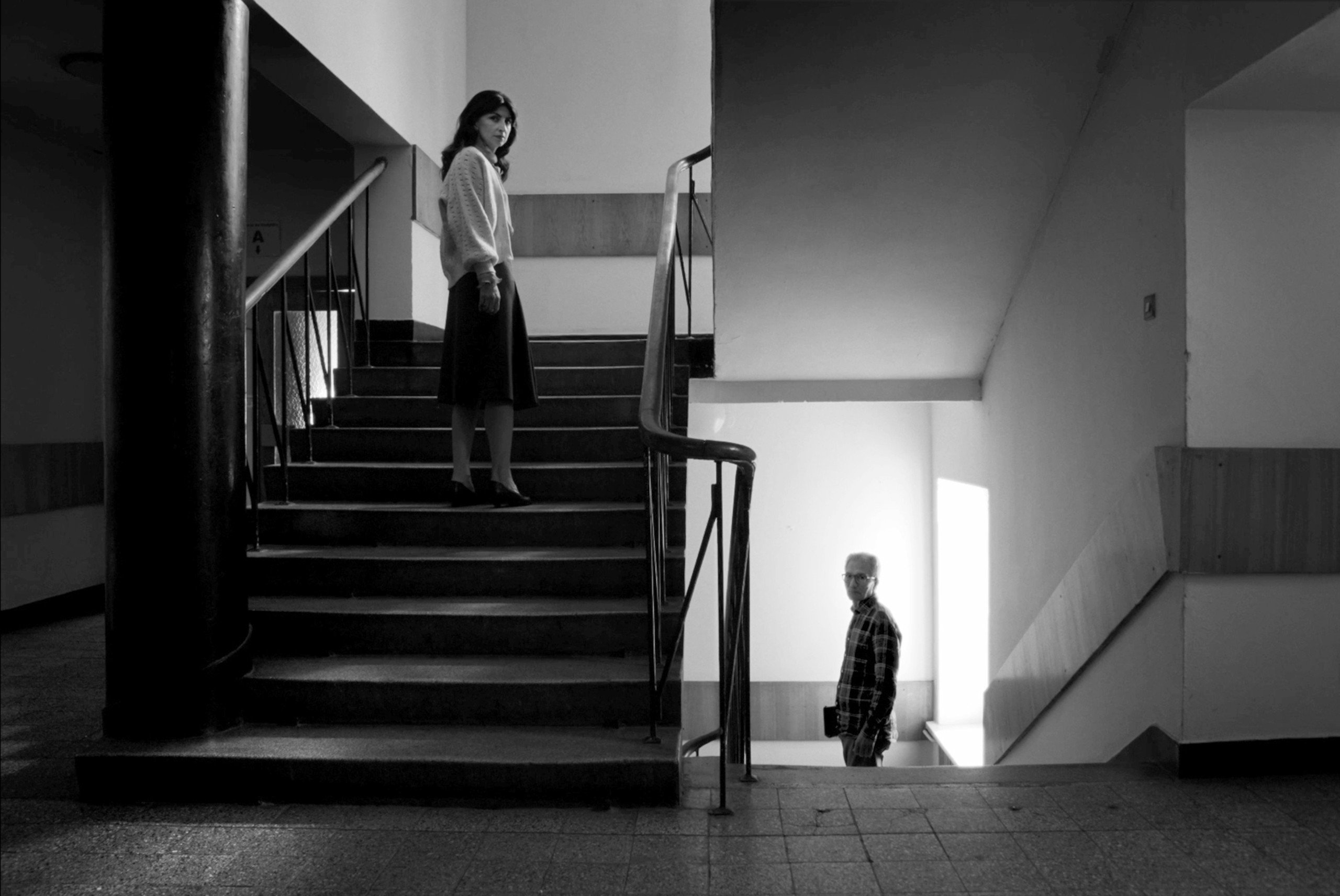There is something very special about the temporal treatment of the film, as if the timelines overlapped and coexisted, as if the past were simultaneous with the present, and this is something only cinema (and perhaps love) can achieve. What were you trying to explore with this sliding of time?
Originally, when I began conceiving this project during the first wave of the pandemic in 2020, the idea was to tell Nadir and Edyta’s story entirely within the time frame of 1968. But as reality unfolded in alarming ways –from Russia’s invasion of Ukraine to the October 7 attacks on Israeli civilians and the ongoing genocide in Gaza—these ruptures in the present insisted on their echoes within the film. It became unbreakably significant that Nadir return to the school in 2024, and the idea of temporal layering took hold. The urgency of our violent now dripped into the narrative. And that’s how the notion of transtemporality, or what we might also call deep time—emerged in image, sound, and text, where time does not necessarily move forward or in a straight line, but collapses and drowns into itself.
The film portrays a man returning to a beloved place (we won’t say more, to avoid spoilers) to shoot a film about that location. There, he finds an old love letter that he never received. Additionally, the film draws on authentic student films as an echo of that moment. How did this idea originate, and what were you aiming to depict?
Hmm, so I won’t spoil anything—but I think it’s a well-known truth that debut films, or student films, often carry a kind of promise: something raw, not yet fully articulated by their authors. There’s a vulnerability and urgency in them that I find deeply captivating.
What drew me even deeper inside was the use of material created by foreign students—people who were complete outsiders in the context in which they found themselves. They didn’t belong, and their films often challenged that reality, consciously or not. At the same time, many of them were carrying the weight of their own countries’ struggles, fighting for independence or imagining a better future. That tension, between being alien and dreaming of liberation, felt incredibly powerful.
What made it even more meaningful was finding a way to insert my own voice alongside theirs, through Edyta and Nadir.
There is a political backdrop throughout the film: the past context, in which the initial action takes place, is deeply tumultuous, set in 1968 amidst a conflict between Poland and Israel. It’s inevitable to think about the current context, with another war carried out by Israel, the genocide in Gaza against Palestinians. In some way, the film suggests the continuity of this violence, almost constant, and how it impacts bodies and lives, down to the most intimate details.
Your reflection is so precise and emotionally charged that it doesn’t even need a question mark—and I completely understand why. How do we deal with this macabric of a present that no longer even pretends to care about political rights, basic human dignity, or holding war criminals accountable? Still, I tried to enter into dialogue with it: the film tries to shed light on a lesser-known reality—the experience of many Jews who remained in Poland after WWII, particularly those who did not believe in the ethnoreligious project of Zionism and who saw themselves as part of Polish society: as its academics, its citizens. In 1968, however, the Polish government cynically exploited the aftermath of the Six-Day War (or the Setback) to justify a purge, claiming grotesquely that these Jews had dual loyalties. Most had no choice but to leave—and while Israel was not the only destination, it was often the most immediate and accessible place of exile.
Starting in the 1950s, Eastern Bloc film and art academies began forming alliances with Arab nations in North Africa and the Middle East, aiming to promote socialist ideals through cultural exchange. By the early 1960s, Arab students were studying filmmaking at institutions like the Łódź Film School. This moment—Arab students arriving in a Poland where Jews were soon to be exiled—creates a stark historical intersection I felt compelled to evoke, because it strikes that all-too-sensitive Israeli nerve: the destructive fear of plurality, and the impulse to shape a singular, exclusionary identity.
Miraculous Accident thinks and feels through the collision of Cold War ideologies, Zionism, and colonial aspirations. I tried to shift the lens to Eastern Europe—a perspective rarely centred in discussions around the Arab and the Jew—to offer my own prism, and also a shared public space to contemplate an inexorable present.
It seems that your film is at least loosely based on the life of Moroccan poet and filmmaker Abdelkader Lagtaâ, who studied at the Lodz Film School, and it is he who plays Nadir. What attracted you to his story? What remains of his real-life story in the film?
First of all, Abdelkader is one of the most extraordinary artists and personalities I’ve had the privilege to work with and know closely. His presence and legacy deeply shaped the film. In fact, the entire film is infused with autobiographical references from Abdelader’s life: the poem Si le désir, many of the student films shown are either directed by him or feature him as an actor.
The only element that doesn’t come from his real life but belongs purely to Nadir, the character, is his encounter—and love story—with Edyta. In some ways, Edyta’s letter is actually based on my own responses to Kader, drawn from the long conversations we had over the five years leading up to the film.
Interview by Gonzalo de Pedro
